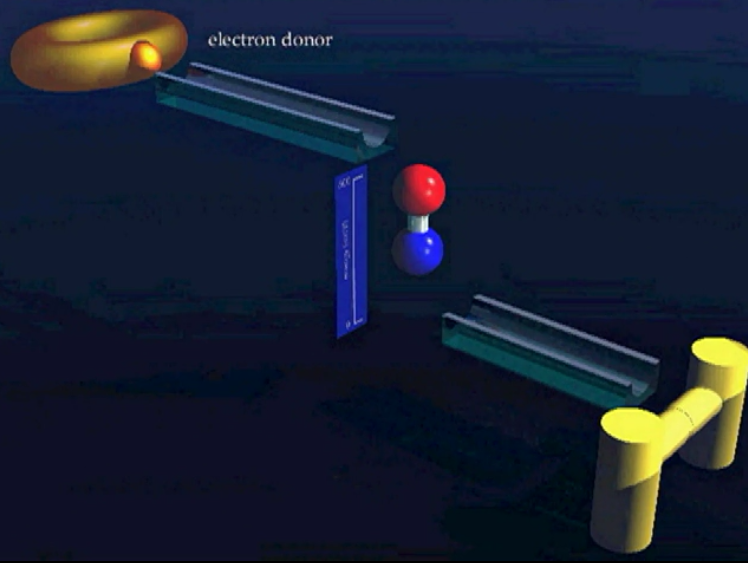OK, great, we smell vibrations. How? All right?
好吧,我们闻到的是震动。怎么闻到呢?
Now when people ask this kind of question, they neglect something, which is that physicists are really clever, unlike biologists.
当人们问这个问题的时候,他们忽略了一些事情,物理学家都是很聪明的,不像生物学家。
And the two of them...this is a joke. I'm a biologist, OK? So it's a joke against myself.
这两类人……这是玩笑话。我是生物学家,好不好?这是一个自嘲的玩笑。
Bob Jacklovich and John Lamb at Ford Motor Company, in the days when Ford Motor was spending vast amounts of money on fundamental research,
福特汽车公司的鲍勃·捷克洛维奇和约翰·兰姆在福特公司花大手笔进行基础研究的时候,
discovered a way to build a spectroscope that was intrinsically nano-scale.
发现了制造纳米级分光镜的方式。
In other words, no mirrors, no lasers, no prisms, no nonsense, just a tiny device, and he built this device.
换句话说,没有镜片,没有激光,没有棱镜,没有废话,只是一个很小的设备。

And this device uses electron tunneling.
他们用电子贯穿制造出这样的仪器。
Now, I could do the dance of electron tunneling, but I've done a video instead, which is much more interesting. Here's how it works.
我其实可以给你们演示电子贯穿的过程,但是我做了一个视频,这样更有意思一些。是这样的。
Electrons are fuzzy creatures, and they can jump across gaps, but only at equal energy.
电子是糊里糊涂的家伙,它们可以越过间隙,但只有在能量相同的情况下。
If the energy differs, they can't jump.
如果能量不同,它们就跳不了。
Unlike us, they won't fall off the cliff.
但是和我们不同,它们不会从悬崖掉下去。
OK. Now. If something absorbs the energy, the electron can travel.
好吧。现在。如果有什么东西把能量吸收了,电子就可以飞驰了。
So here you have a system, you have something -- and there's plenty of that stuff in biology -- some substance giving an electron,
现在你们已经了解了这个体系,要是有生物界有很多这样的东西,要是有一些物质可以提供电子,
and the electron tries to jump, and only when a molecule comes along that has the right vibration does the reaction happen, OK?
电子想要越过间隙只有在一个有匹配震动的分子出现时,反应才会发生。
This is the basis for the device that these two guys at Ford built.
这是福特公司那两个制作的仪器的基本原理。












